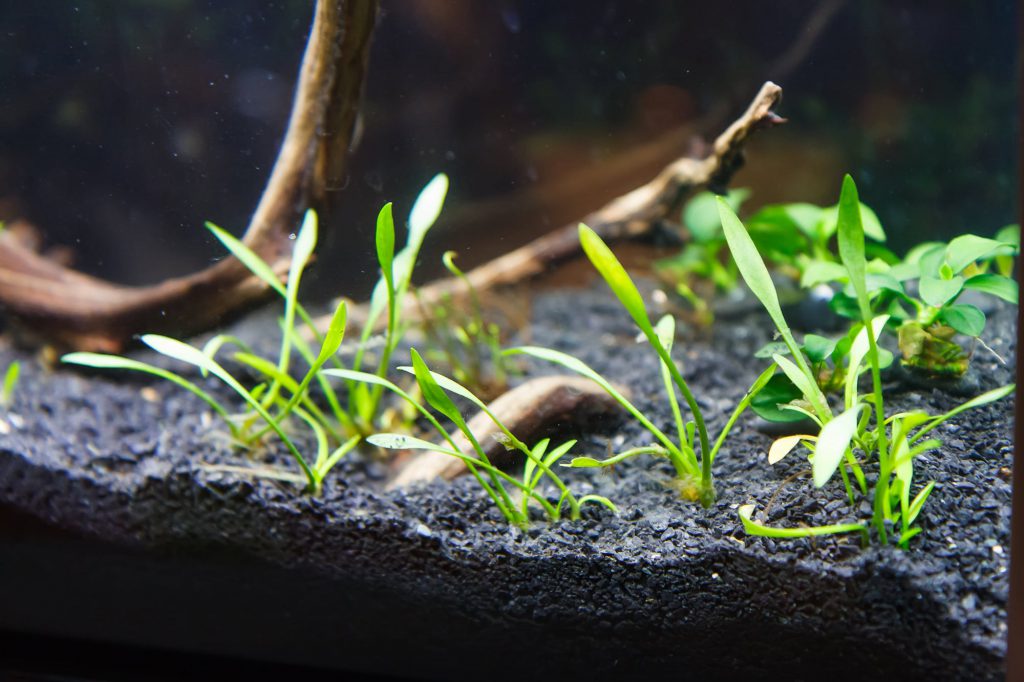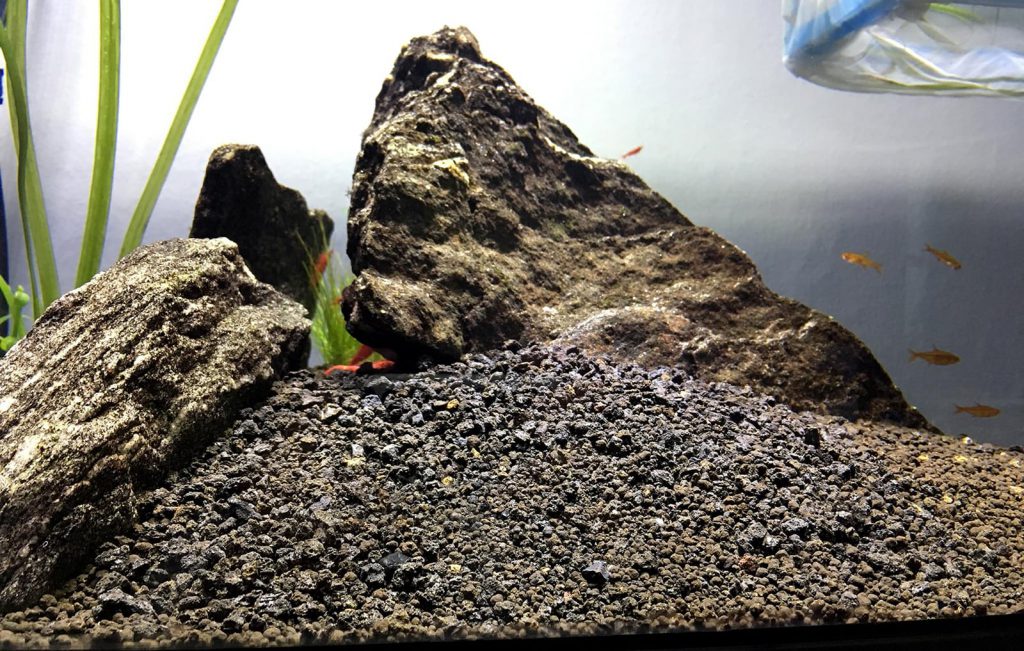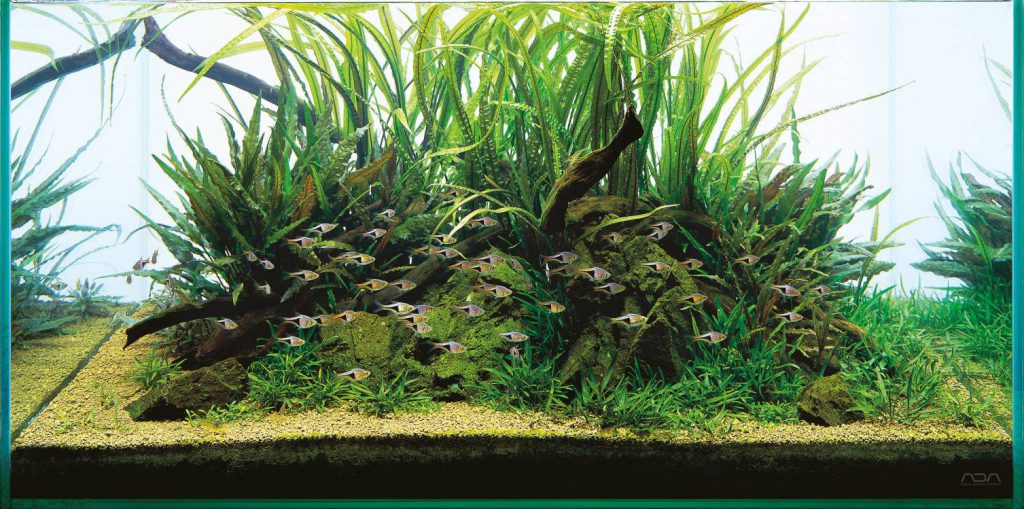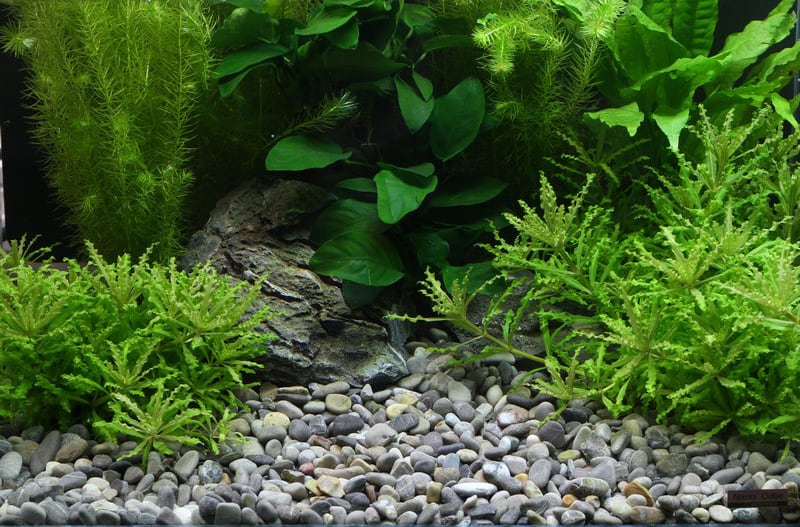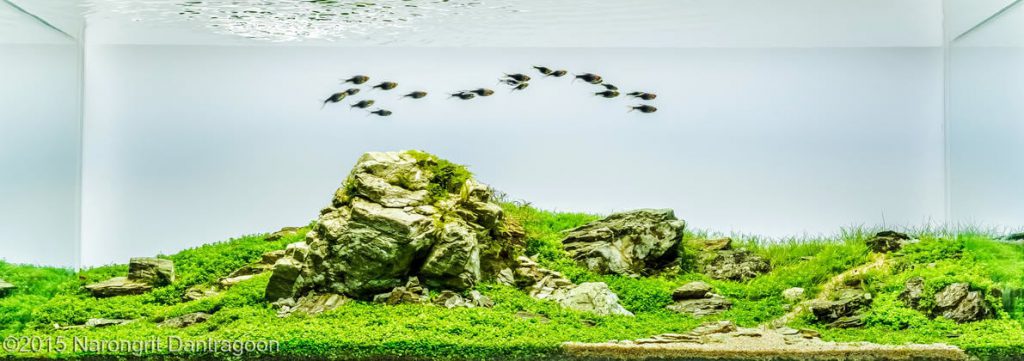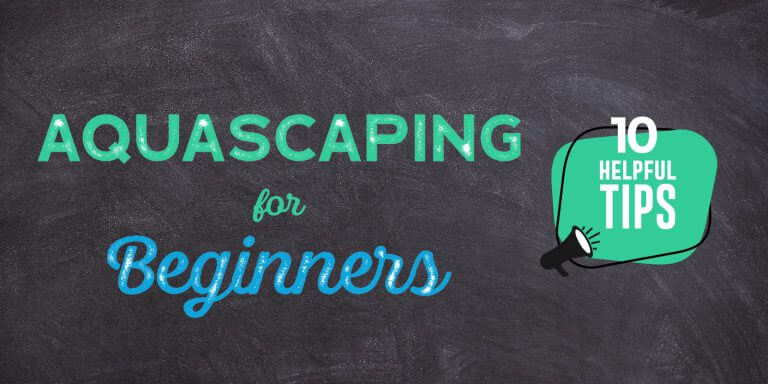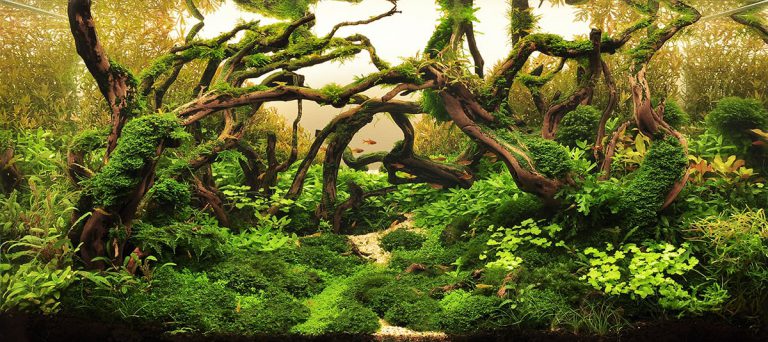This article is the first in our new series where we will look at the elements of hardscaping in a planted tank in greater detail. In part 1 we will look at types of aquarium sand and gravel commonly used today, techniques and tools used, and finally how the visual relationship works between sand and gravel, driftwood and rocks.
Where we have previously talked about aquarium substrates and fertilizers, in this article we will look at how aquarium sand and gravel are used in aquascaping and how they play an important role in the final aquascape piece.
A little Background On Using Aquarium Sand And Gravel In The Planted Tank
In an aquascape the art is in creating a piece that is inspired by, and replicating nature. Aquarium sand and gravel are graded by size and positioned in the aquarium to emulate scenes found in nature.
Homogeneity, ‘composition from like parts, elements, or characteristics’ is a very popular and visually appealing aspect of an aquascape. When similar rocks, stones and gravels are used together, the scene is brought together and becomes whole.
This gives the design the feel of the Nature Aquarium that Amano found so appealing.
With the planted tank, the choice of sand and gravel take on another role; that of plant support. Not just visual, but practical.
Common Types Of Aquarium Sand And Gravel Used In Aquascaping
The word substrate refers to the material you choose to use on the bottom of your planted tank. It is really important to research your substrate choice carefully as it not only is an aesthetic choice, but one which will affect the water’s chemistry, filtration, and the well-being of the aquarium’s fish, shrimp, and any other inhabitants.
Fluorite
This is a kind of clay gravel. It is lightweight and does not compact as easily as other substrates. Fluorite can be easily mixed with sand or gravel to create a great natural look.
One of the best features of a fluorite in your planted tank is that it never needs to be replaced. When using for the first time, make sure you have rinsed it thoroughly to wash away all of the dust.
Eco-Complete
This is one of the best quality options available. Eco-complete contains more than 25 essential nutrients to support plant growth.
It also contains live beneficial bacteria that are released into your tank to assist with the nitrogen cycle. Eco-complete is also a great choice as it comes in a variety of colours.
Aqua Soil
This is a very popular choice for use in aquascaping as it gives a very natural appearance to your aquarium. Aqua soil is also popular as it can be used as the sole substrate in your tank, or matched with a base layer of sand, such as the ADA Power Sand, providing biological filtration. Similarly to Eco-Complete, aqua soil is available in a variety of colours and contains long-lasting nutrition for plants.
ADA Aqua Soil is a very popular brand. It is designed to be a very simple product to use; you just pour it into the aquarium and plant straight into it.
ADA Power Sand is a volcanic pumice. It stops compaction and encourages water movement within the substrate helping to keep it fresh.
Potting Soil
This can be a tricky substrate to use in an aquascape. It needs to be worked with carefully to ensure it stays submerged.
Aquarium Sand & Gravel
Aquarium sand and gravel come in a wide variety of colours and grades, but you will need to add fertilisers for your plants. Small gravel is the best for strong root growth.
Creating Slopes Using Aquarium Sand And Gravel
When planning a planted tank, slopes have a big part to play in the texture and visual dynamics of the finished piece of art. Aquarium fashions used to be for flat substrate.
Now, especially following in the footsteps of Takashi Amano, the trend is for great slopes and sweeping changes of gradient in aquascapes. This creates the illusion of depth and movement within your aquarium.
Why create slopes in the substrate? To achieve the sense of scale and depth! The limited space afforded in an aquarium means that designs need to be creative for those displays to really shine.
A decent depth of substrate also allows for your statement pieces of rock or wood to have a great support, and stem planting will root much more quickly and easily when it has a deep substrate to root in.
One consideration to bear in mind is that shrimp have a tendency to move the substrate around as they clean it. If you were to just leave the aquascape then, in time, the slope may flatten out. Just make sure you are keeping an eye out for subsidence and rake any moved substrate back to its original location as soon as you notice movement.
If you have planted your aquarium quite heavily, then even with the most active of shrimps, the plants should root quickly and you shouldn’t have any issues.
When planning your aquascape, remember that it is rocks as well as plants that maintain the slope. ADA sell tools for this. A rule of thumb when laying out a sloped aquascape is: level the substrate, add hardscaping items (large rocks or wood), add additional substrate between and behind the large pieces, and plant heavily.
Tools For Arranging Aquarium Sand And Gravel
There is nothing more exciting than beginning a new aquascape. There are a few tools that will make the tasks and fiddly bits a little easier.
Stainless Steel Planting Tweezers
These are a versatile tool that you will find yourself using for many tasks; planting, lifting pieces that you have dropped in the aquarium (we all do it!), and many more.
There are tongs on the market that are designed to float. While this seems like a great idea, a pair of stainless steel ones won’t rust!
Stainless Steel Trimming Scissors
Specialized aquatic scissors have a brilliant design feature; they have a curve in the handle that means you can look from the outside of the aquarium while you are cutting.
This will really assist you with precision cutting. Again, as with the tongs, don’t be tempted by floating scissors: buy stainless!
Maintenance Tweezers
These are a real multi-purpose tool when it comes to aquascaping. Those times when you just can’t quite reach with your hand, or the tongs are not the tool for the job, there are tweezers. Stainless steel, of course.
Aquarium Sand Flatteners
If you are looking to achieve that flat and immaculate look with your aquarium substrate, an aquarium sand flattener is an absolute essential piece of kit in the aquascaper’s tool bag.
It is used to distribute the top level of substrate cleanly and evenly. This tool makes changes in the layout and maintenance very easy. Guess what? Buy stainless!
Creating Contrast With 2 Types Of Aquarium Sand Or Gravel
As we have discussed in length above, the choice of sands and gravels will really help to create the illusion of space and movement. Think of a mountain scene in nature. How do you know where the side of the mountain takes a break and a path cuts through?
Quite often you know there is a path because of a change of colour or another visual element in the scene. To really draw the eye to, for example, the path in a mountain scene, consider using a completely different colour substrate. This will almost force the viewer to see the scene as you imagined it.
The Visual Relationship Between Aquarium Sand, Gravel, Driftwood And Rocks
In an aquascape, particularly a Nature Aquarium, you are not looking to create visual tension in your composition. In the aquascaping world, it is generally acknowledged that an aquarium featuring wood as its main feature should not then also make a feature of rocks. Sometimes less is more, and this is true when it comes to feature pieces in your aquascape.
When you are working on a rock formation piece, do make sure you have carefully considered how rock formations appear in nature. The change from the very largest rock to the smallest is not instant. Large rocks chip away to smaller pieces and then from large stones to smaller stones and then to gravel. It is this very precise attention to detail that will really make your aquascape stand out as an aesthetically appealing work of art.
Overall, the main theme for choosing the correct substrate for your composition is the same for every choice you make: research! Make sure you have chosen the most appropriate sand or gravel and that it will support your hardscaping choices as well as everything that will live inside your planted aquarium.
In Part 2 of our look at Planted Aquarium Hardscape Essentials, we will be looking at aquascaping rocks and their uses in the planted tank.
Enjoyed this article? Spread the word by sharing it with your friends!



